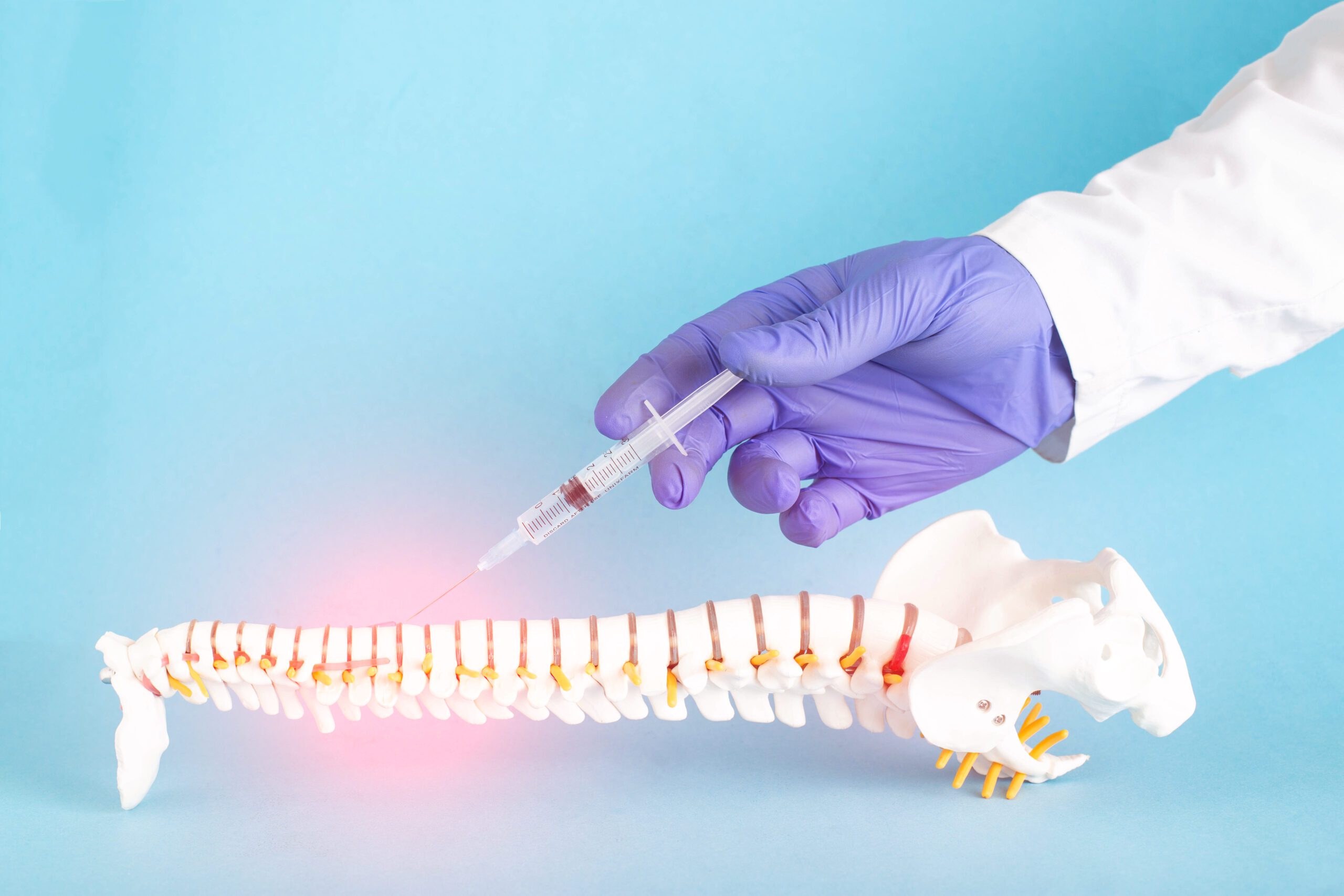Chronic pain is a debilitating condition that affects millions of people worldwide. It can be caused by a variety of conditions, including arthritis, fibromyalgia, and back injuries. Managing chronic pain can be a difficult and ongoing process, but new treatments and strategies are being developed to help individuals find relief.
5 Ways to Manage Chronic Pain
1. Medications

Traditionally, chronic pain has been treated with medications such as opioids, nonsteroidal anti-inflammatory drugs (NSAIDs), and antidepressants. Medications are a common treatment for chronic pain. There are several types of medications that can be used to manage chronic pain, including:
- Non-steroidal anti-inflammatory drugs (NSAIDs): These medications, such as ibuprofen and naproxen, work by reducing inflammation and pain. They are often used for conditions such as arthritis and back pain.
- Opioids: Opioids, such as codeine, morphine, and fentanyl, are powerful painkillers that can provide relief for severe pain. They work by binding to specific receptors in the brain and spinal cord, which reduces the perception of pain. However, they are not recommended for long-term use as they can lead to addiction and tolerance.
- Antidepressants: Antidepressant medications, such as amitriptyline and duloxetine, can also be used to manage chronic pain. They work by altering the levels of certain chemicals in the brain that are involved in pain perception. They are also useful in treating depression and anxiety that often accompany chronic pain.
- Anticonvulsants: Anticonvulsants, such as gabapentin and pregabalin, are medications that are used to treat seizures, but can also be used to help manage certain types of chronic pain, such as neuropathic pain.
These medications can help to reduce pain, but they can also have significant side effects and are not suitable for long-term use.
2. Physical therapy

Physical therapy can include a variety of techniques and exercises that can help to reduce pain and improve function. Some of the most common physical therapy techniques include:
- Exercise: Regular exercise can help to improve flexibility, strength, and range of motion, which can in turn reduce pain. A physical therapist can work with you to develop an exercise program that is tailored to your specific needs.
- Stretching: Stretching can help to reduce muscle tension, which can in turn reduce pain. A physical therapist can teach you specific stretches that can help to reduce pain in the areas of your body that are affected by chronic pain.
- Manual therapy: Manual therapy, such as massage, mobilization, and manipulation, can help to reduce pain and improve function. A physical therapist can use manual therapy to relieve pain and restore normal movement in the affected areas of your body.
- Education: A physical therapist can also teach you about proper body mechanics and posture, which can help to reduce pain and prevent further injury.
- Dry Needling or Acupuncture: Some physical therapists are trained in dry needling which is a technique that can be useful in reducing pain and inflammation. Acupuncture is another alternative therapy some physical therapists may offer.
Physical therapy can be an effective treatment for chronic pain, but it is not suitable for everyone.
3. Cognitive-behavioral Therapy (CBT)

Cognitive-behavioral therapy (CBT) is a type of talk therapy that can be used to help individuals manage the emotional and psychological aspects of chronic pain. CBT is based on the idea that our thoughts, beliefs, and attitudes can affect how we feel physically and emotionally.
CBT for chronic pain typically involves working with a therapist to identify and change negative thought patterns and behaviors that may be contributing to pain. Some techniques that may be used include:
- Relaxation techniques: CBT often includes techniques for managing stress and anxiety, such as progressive muscle relaxation, deep breathing exercises, and mindfulness. These techniques can help to reduce pain by reducing muscle tension and promoting feelings of calm.
- Problem-solving skills: CBT can help to improve your ability to solve problems and cope with difficult situations related to your chronic pain. This may include identifying and addressing issues that may be contributing to your pain, such as depression or anxiety.
- Goal-setting: CBT can help you set realistic goals for managing your chronic pain and make a plan to achieve them. This may include setting goals for physical activity, sleep, and stress management.
- Challenging negative thoughts: CBT can help you identify and challenge negative thoughts and beliefs related to your chronic pain. This may include challenging thoughts such as “I will never get better” or “I can’t do anything because of my pain”.
- Graded activity: CBT can help you gradually increase your level of physical activity, which can help to improve your physical function and reduce pain.
- It’s important to note that CBT is not a cure for chronic pain, but it can be an effective tool for managing it.
4. Medical cannabis

Studies have shown that the compounds found in cannabis, such as CBD, can help to reduce pain, inflammation and muscle spasms.
Medical cannabis, also known as medical marijuana, is a treatment option for chronic pain that has received increasing attention in recent years. Medical cannabis is made up of compounds called cannabinoids, the most well-known of which is tetrahydrocannabinol (THC) and cannabidiol (CBD).
- CBD: CBD is a non-psychoactive compound found in cannabis that has been shown to have anti-inflammatory and pain-relieving properties. CBD can be used to manage a wide range of chronic pain conditions, including neuropathic pain, fibromyalgia, and rheumatoid arthritis.
- THC: THC is the psychoactive compound in cannabis that can provide pain relief, but it also can cause side effects such as dry mouth, dizziness, and drowsiness.
- Medical cannabis products: Medical cannabis is available in various forms, including capsules, oils, tinctures, and topical creams. These products can be used to manage chronic pain, and the appropriate dosage and form will vary for each person.
- Qualified Medical Practitioners: Medical cannabis is only legally available by prescription from qualified medical practitioners in countries/states where it is legal. Patients should be evaluated by a medical professional to determine if medical cannabis is an appropriate treatment option for them.
- Side effects: Medical cannabis may have some side effects, such as dry mouth, dizziness, and drowsiness, but they are generally mild and short-lived.
In addition to these treatments, there are several self-management strategies that individuals can use to reduce pain, such as relaxation techniques, mindfulness and meditation, and stress management.
5. Interventional procedures

What is an interventional procedure? An interventional procedure is a minimally invasive diagnostic, therapeutic or biopsy procedure. – Source
Interventional procedures are a group of treatments that can be used to manage chronic pain. These procedures are typically performed by a pain management specialist and may be done on an outpatient basis. Some examples of interventional procedures for chronic pain include:
- Nerve blocks: Nerve blocks, or neural blockades, are procedures that can help prevent or manage many different types of pain. They are often injections of medicines that block pain from specific nerves. They can be used for pain relief as well as total loss of feeling if needed for surgery.
- Epidural injections: Epidural injections are used to relieve pain in the lower back and legs by injecting a corticosteroid medication into the epidural space surrounding the spinal cord.
- Spinal cord stimulation: Spinal cord stimulation involves implanting a small device that sends electrical impulses to the spinal cord to block pain signals. This can be an effective treatment for chronic pain conditions such as failed back surgery syndrome and complex regional pain syndrome.
- Radiofrequency ablation: Radiofrequency ablation is a procedure that uses heat generated by radiofrequency energy to destroy the nerve fibers that transmit pain. This procedure is most commonly used to treat chronic pain in the neck and lower back.
- Vertebroplasty and Kyphoplasty: These are minimally invasive procedures used to treat pain caused by a vertebral compression fracture, often seen in patients with osteoporosis.
It’s important to note that these procedures may not be suitable for everyone, and they may not provide a complete cure for chronic pain. They should be considered after other treatments such as physical therapy, cognitive-behavioral therapy and self-management strategies have been exhausted. It’s essential to work
In conclusion, managing chronic pain is a difficult and ongoing process, but new treatments and strategies are being developed to help individuals find relief. From physical therapy to cognitive-behavioral therapy, medical cannabis and self-management strategies, there are several options available to help individuals reduce pain and improve their overall well-being. It’s important to work with a healthcare professional to find the best treatment plan that suits your needs.
Contact us here at Wilmington 1st Walk-In and we will help you get better.
